#kyung hee university
Text
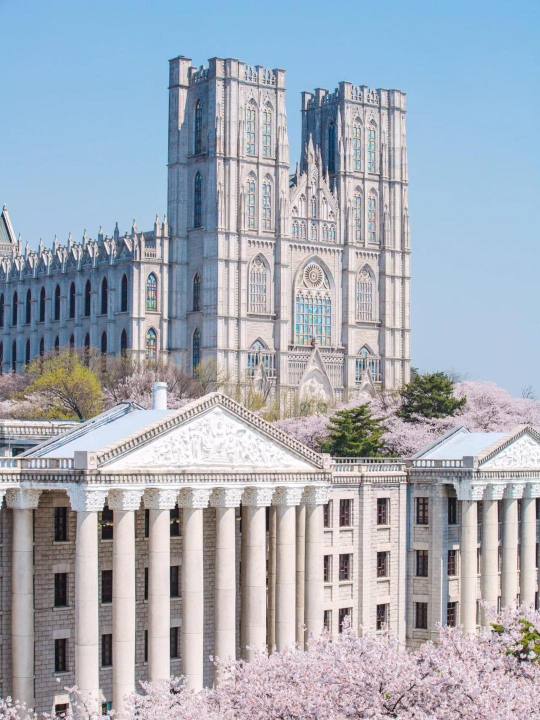
#building#architecture#university#kyunghee#kyunghee university#kyung hee university#aesthetic#light aesthetic#light#light academia#academia#academia aesthetic#academia vibes#light academia vibes#light academia vibe#captvreme
446 notes
·
View notes
Text






RIWOO @ KYUNG HEE UNIVERSITY FESTIVAL
+ riwoo cherishing the moment <3

#obsessed obsessed obsessed#i love this man sm omfg someone run me over w a truck or something idc anymore#boynextdoor#riwoo#kyung hee university#bnd#bonedo#forbnd#useroro#eritual#userfoive
12 notes
·
View notes
Text


©lemon-0822 | do not crop or edit logo
46 notes
·
View notes
Text
It's been a long time since Xdinary Heroes participated in a festival event. After putting so much focus on their Break the Brake World Tour and their recently-released Troubleshooting album, they finally went back to participate in a festival concert show and this time, it is in Kyung Hee University.
It's good to see Xdinary Heroes doing this again. It's good to know that despite their popularity now, they can still squeeze in such engagements on their quite busy schedule. It's a relief to be able to realize that our OT6 still has their feet rooted to the ground. And for a Villain, there's enough reason to feel so proud of EXDIZ.








7 notes
·
View notes
Photo
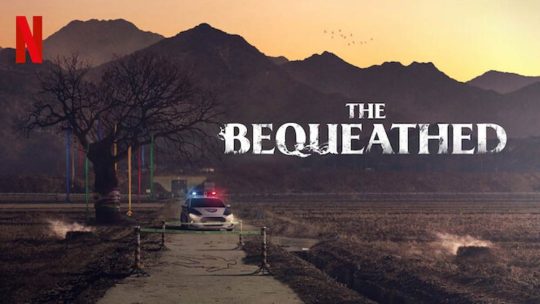
(via EREDITA’ SEPOLTA - The Bequeathed)
Un cimitero di famiglia, un fratellastro di cui non sapeva l’esistenza che appare al funerale di uno zio che ha appena scoperto di avere.
Per Yoon Seo Ha è l’inizio di un mistero costellato di omicidi.
#diamanta#diversamente intelligente#drama#drama coreani#drama universe#kdrama#eredità sepolta#kim hyun joo#mistero#netflix#park byung eun#park hee soon#recensioni#ryu kyung soo#the bequeathed#thriller
0 notes
Text




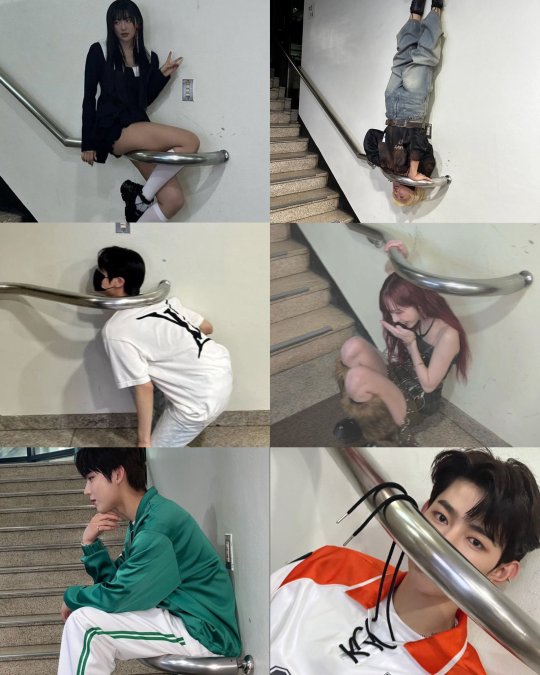
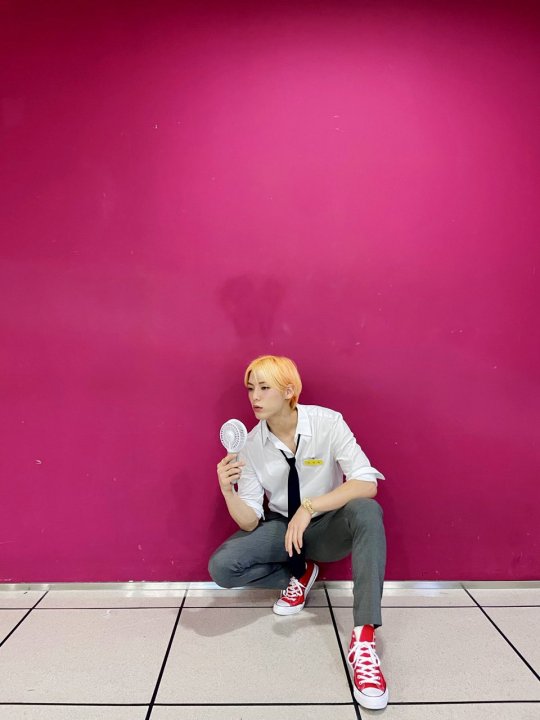
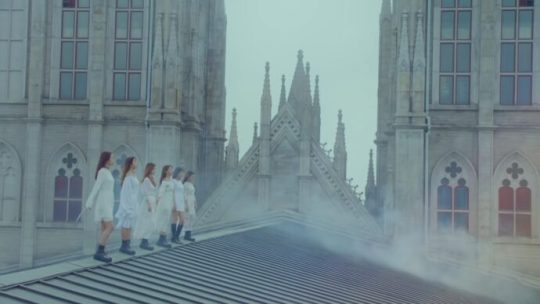


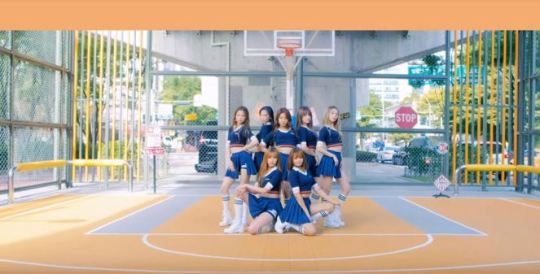
#music bank stairs have silver railing inkigayo stairs have red railing#i did my best here.......#thought about putting a mv screencap for the theme park too but it also is used for day photoshoots so...#mypoll
55 notes
·
View notes
Text

2024 DOYOUNG CONCERT [ Dear Youth, ]
〖 Kyung Hee University Grand Peace Palace 〗
➫2024.5.25(SAT) 6PM(KST)
➫2024.5.26(SUN) 4PM(KST)
25 notes
·
View notes
Text
AU in which you become an immortal and unable to feel any pain if your 'soulmate' dies. However, if they have been reborn in the next timeline, they will have no memories of the person who was destined to them in the past. You return to being a mortal once your soulmate falls in love with you again.
Jinhae — Hae-in lost her life in the battle with the monsters during the war with the Monarchs. Jin-woo was heartbroken and mad, blaming himself for not saving Hae-in unlike before. He saved the world, but not his world. Even as the Chalice of Rebirth has been used, Jin-woo remained immortal as he already was, living in the newfound world where nobody would have to die or suffer anymore. Jin-woo had a chance to treat the universe as his realm, as the human world would no longer need him, but he stayed nonetheless — he needed Hae-in the most.
Minlee — Byung-gyu died amidst the Jeju raid. Ju-hee wondered why she couldn't feel an ounce of pain after accidentally touching hot water. Her mother told her that her soulmate had bit the dust. Ju-hee somehow couldn't believe why she was crying over someone whom she never even met, but sooner, she realized that she lost the person whom she was supposed to spend the rest of her life with. War had torn their fates apart from intertwining.
Heeseok — when news broke out that one of South Korea's most powerful hunters had bitten the dust, Hee-jin felt like her world crumbled into ashes. She ignored the concerned looks from the hunters when they witnessed her get injured without wincing in agony. They realized she had lost her soulmate, but Hee-jin didn't want to talk about it; she could only hold on the hope of seeing Eun-seok someday even if it meant it would take her an eternity.
Sungpark — when Il-hwan died, that was the last time Kyung-hye felt pain. Knowing about the whole thing of soulmates, she waited for years and years to cross paths with her husband, willing to wait for a hundred more as she already did when he first disappeared, all while comforting her son, who carried the empty space Hae-in had left in his soul.
Choibaek — Jong-in died protecting Yoon-ho from explosive attacks from the monsters. Yoon-ho desperately tried to save him and the healers did their best to heal the hunter, but it was too late. Yoon-ho mourned and lived with a broken heart, the most excruciating years in his life, watching days go by without his firefly next to him. The only time he would find happiness was when he found Jong-in, and Yoon-ho swore to not lose him again.
Woozhi — Zhigang was there at Jin-chul's funeral. The handsome, stoic man who caught his eye at the USA. He wondered how their life could've went if Jin-chul had not mounted on the plane by his own. A lot of what if's, but none managed to heal Zhigang's heart as he waited and made a place in Korea, growing tired of his immortality and praying for his soulmate to pull him out of his 'curse'.
Taenoru — Minoru got killed during a severe dungeon break in Tokyo. Tae-gyu didn't know why he was even affected by the news, he barely interacted with Minoru at all, so why would he care? Turns out, he did. As he began to outlive his guild members, Tae-gyu wondered how things could've been if he listened carefully into what else his heart wanted.
#have some pining everyone#feel free to have your own scenario i'm just adding flesh to this post#solo leveling#jinhae#minlee#heeseok#sungpark#choibaek#woozhi#taenoru
10 notes
·
View notes
Text


[240522] Kyung Hee University Festival
dowoonyzzang | do not edit
13 notes
·
View notes
Photo

230419 SHINee twitter update: TAEMIN D-3
SHINee WORLD 만나기까지 D-3 ✨
22-23일 경희대 평화의전당 “RE : ACT”에서 만나요💎
(Until meeting SHINee WORLD D-3 ✨
22nd-23rd, Kyung Hee University Peace Hall, see you at “RE : ACT” 💎)
82 notes
·
View notes
Text
youtube
BOYNEXTAGE|‘뭣 같아’ Stage CAM @ 2023 경희대학교 가을 대동제 ‘MASTERPEACE : 월하’ - BOYNEXTDOOR
0 notes
Text


©lemon-0822 | do not crop or edit logo
12 notes
·
View notes
Text
Performing their "Little Things" in front of a young crowd in Kyung Hee University is not actually considered as just some of those little things Xdinary Heroes could do. It's a big thing! It's a big thing to be invited to such an event and it's a big thing to realize that their band is actually getting well known, getting popular and hopefully, will be able to recruit some more people to join the fandom.
Keep sailing, EXDIZ! Villains are with you all the way!
(Video: leeuvvi / X)
5 notes
·
View notes
Text
The History of Korean Male Groups – From Yeonhee Professional Singers’ Quartet to BTS -> Pt. 5/? (Rewrite)
I am quite surprised by the limited information available regarding this male group, which is known by two different names. I will endeavour to clarify the situation; the group in question is referred to as either 'Arirang Boys' (아리랑보이즈는) or 'Joseon Music Troupe' (조선악극단). It remains unclear why they operated under these two names.
This situation is reminiscent of the male groups 'Yeonhee Professional Quartet' (연희전문사중창단) and 'Youth Member' (청년회원), where the former has significantly more information available compared to the later.
Before Liberation – 1940s
Prior to delving deeper, I would like to clarify my approach to discussing this male group, which predates the liberation era and thus had limited information available, similar to my previous post regarding the first two male groups (Part 2). I will first outline the group and its members, followed by the company they were associated with.
Additionally, I will mention the 'Jeogori Sisters,' who were part of the same company as the 'Arirang Boys,' noting that one member from each group is a married couple. However, I will refrain from providing extensive details about the 'Jeogori Sisters' as they will be addressed in a future post within The History of Korean Girl Groups.
The Arirang Boys (아리랑보이즈는), a four-member project group, emerged around 1940 and frequently performed alongside the Jeogori Sisters, a female ensemble featuring Lee Nan-young (이난영), Jang Se-jeong (장세정), Kim Neung-ja (김능자), Lee Jun-hee (이준희), and Seo Bong-hee (서봉희). The group comprised Kim Hae-song (김해송), a singer and composer married to Lee Nan-young, composer Park Si-chun (박시춘), comedian Lee Bok-bon (이복본) known for his jazz performances, and composer-arranger Song Hee-sun (송희선). Additionally, Hyun Kyung-seop (현경섭), a trumpet player for an orchestra record company, occasionally filled in for other members.

In no particular order, members of Arirang Boys: Kim Hae-song (김해송), Park Si-chun (박시춘), Lee Bok-bon (이복본), Song Hee-sun (송희선) and Hyun Kyung-seop (현경섭) who occasionally filled in for other members.
Despite not releasing any albums, they achieved popularity through their use of instruments like the guitar and violin, enhancing their stage performances. According to singer Kim Jeong-gu's (김정구) testimony prior to his death, the Arirang Boys were particularly cherished for their comedic interludes during shows.
The Arirang Boys Members:
I will briefly talk about the ‘Arirang Boys’ members here but will go into detail about them separately in future posts.
Kim Hae-song (김해송)

A few other photos of him here.
Kim Hae-song, whose real name was Kim Song-gyu (金松奎) and Japanese name Kyouya Kobayashi (金山松夫), was born in December 1911 in Gaecheon, Pyeongannam-do, during the Japanese colonial era, and he passed away around 1950 at approximately 39 or 40 years of age. It is believed that he remained in Seoul throughout the Korean War and died while being abducted to North Korea.
A multifaceted artist, he was a composer, singer, lyricist, guitarist, and musical director, active from 1935 to 1950. He graduated from Pyongyang Gwangseong High School in 1933, and although there are unverified claims of his attendance at Sungsil College and Jochi University in Japan, these remain unconfirmed. In 1935, he signed with Okeh Records, marking the beginning of his career as a singer and composer.
Lee Bok-bon (이복본)

Lee Bok-bon (李福本), born in Seoul in 1911 and died around 1950?, he was a singer from Joseon and South Korea . He first appeared on the stage of Joseon Theater Company in 1933 and appeared in director Ahn Jong-hwa's (안종화) film 'Crossroads of Youth' (청춘의 십자로) in 1934. He is also called "Korea's first jazz singer" as a member of the Seoul theater company 'Mooran Rouge'. However, during the Korean War, he was kidnapped by the North Korean People's Army during the Battle of Seoul and disappeared thereafter, and is presumed to have died.
Park Si-chun (박시춘)

A few other photos him and information but nothing new here.
Park Si-chun, real name Park Soon-dong (박순동; 朴順東) was born on October 28, 1913, in Miryang, South Korea, was a versatile artist who passed away on June 30, 1996, at 82. His talents included music composition, guitar, and proficiency in instruments like the trumpet, violin, and saxophone. He also worked in the film industry as an actor, director, producer, and music director.
One of his notable works is the pro-Japanese song "Blood Letter Support," which expresses a desire to serve as a volunteer soldier during the Pacific War. The lyrics, by Jo Myeong-am, reflect strong pro-Japanese sentiments. In 2008, he was recognized as a pro-Japanese figure by the Institute for Research in Collaborationist Activities, and a festival honouring him sparked controversy. He was also listed among 705 pro-Japanese anti-nationalists by the Truth and Reconciliation Commission in 2009.
Song Hee-sun (송희선)
I’m not shore which person in the photo shown above is Song Hee-Sun, but I hope this information that I found on him even though it a lot, is the wright Song Hee-sun.
The birth and death dates of Song Hee-sun remain unknown. He began his music education at Sungsil High School in Pyongyang and later ventured into the Japanese light music scene, establishing himself as a saxophonist and subsequently performing with OK Grand Shodan.
His notable contributions include musical dramas like "Dongyang no Rose" (동양의 장미) and "Golden Come Out Ttuktak," (금 나와라 뚝딱) as well as the song "The Young Days of the Sea" (바다의 젊은 날). Additionally, the arrangements he created for Lee Hwa-ja (이화자) during the Japanese colonial era are featured on the Oke album.
Hyun Kyung-seop (현경섭)
I’m not shore which person in the photo shown above is Hyun Kyung-seop, he might not be in the photo because he was occasionally filled in for other members at the time.While I was looking into Hun Kyung-seop I found this blog about him, that the National Museum of Korean History published a collection of Hyun Kyun-seop.As there is little information that I could find I’m going to add all the information here, but i will post him and other members' information separately in the future.

The National Museum of Korean History has published a collection featuring 267 artifacts related to Hyun Kyung-seop, a prominent trumpet player associated with Oke Records during the Japanese colonial era. This collection encompasses photographs of Hyun Kyung-seop and his personal diaries, providing insight into his life during this tumultuous period. Despite his significant contributions to music, particularly as a key member of the Joseon Music Troupe, Hyun Kyung-seop remains largely unremembered by contemporary audiences.
Beginning his career at the age of 22 in 1935, Hyun Kyung-seop gained recognition for his performances in Japan and China, with media outlets even comparing him to the legendary Louis Armstrong. His versatility extended beyond trumpet playing to include arranging, acting, dancing, and singing. However, his life took a tragic turn during the Korean War when he was abducted by North Korean soldiers in Seoul, leading to a prolonged absence that left his family in distress. Despite efforts by his son, Hyun-won, to locate him, including a DNA test through the Red Cross, the family faced numerous hardships due to the stigma associated with his disappearance, which severely restricted their opportunities and freedoms.

Hyun Kyun-seop playing the trumpet in the middle.
This compilation encompasses original images from each day of Hyun Kyung-seop’s diary, a variety of identification documents, photographs of his music colleagues, and all phonograph records he possessed, which have been digitally restored and compiled onto a DVD.
However, these DVDs are currently unavailable for access to my knowledge.
The once-obscure trumpet player Hyun Kyung-seop, who nearly faded from historical memory following his performance at the Seoul Geukdo Theatre in June 1950, has been immortalized through a collection published by the National Museum of Korean History. Transitioning from anonymity to becoming a symbol of the Japanese colonial era and the post-liberation music scene, this collection, made possible by the contributions of his family and the museum's restoration efforts, serves as a crucial resource for understanding the evolution of popular music in Korea.
Okeh Records (오케레코드):
Oke and Okeh Records are the same company. The photos shown below are people that worked for or with Okeh Records, and were attached with the information that I found of the company.
Founded in the early 1930s, Okeh Records highlighted diverse talents from Korea and Japan. Despite facing censorship and limitations, the label effectively developed around six notable groups, producing music films and establishing the Orchestration Team, Orchestra Music 'n Dance Research Institute, while managing Okestudio and theatres both domestically and internationally. The label also toured extensively across Korea, Japan, and Northern Asia, and created military songs. Although Okeh ceased its activities due to the Pacific War, its substantial yet often overlooked influence laid an essential groundwork for future artists following liberation.
Oke Records, a South Korean record label, was operational both prior to and following the country's liberation. The name "Okeh" derives from the Japanese pronunciation of the English term "Okay," and it is represented in the alphabet as 'Okeh.'
Founded in 1932, the exact date and conditions of its inception are not well-documented; however, the celebration of the '15th Anniversary of the Joseon Musical Troupe' (조선악극단) in April 1947 implies that the organization may have been established around April 1932.

Okeh Records was the latest addition to the five major record companies active during the Japanese colonial period, which included Columbia Records, Victor Records, Polydol Records, and Taepyeong Records, all of which ceased operations by 1943, coinciding with the end of the Pacific War. Despite being the last to enter the market, Okeh Records achieved notable success, becoming the second-largest producer of records and playing a crucial role in promoting many of the era's most prominent artists and songs.
Initially, the company was known as the Japanese Okeh Gramophone Company Gyeongseong Temporary Sales Office, later rebranded as the Gyeongseong Branch. The management was overseen by a Korean named Lee Cheol, although information regarding the company's financial structure is scarce. It is clear that Okeh Records depended on Japan's Teichiku Records for its recording and pressing operations, indicating a significant initial partnership with Teichiku. A theory suggests that Lee Cheol's wife, Hyeon Song-ja, had a school friend whose father was an executive at Teichiku Records, which may have aided in the branch's establishment; however, this connection remains unverified.

Okeh Records launched its first album in February 1933 and maintained an active production schedule for approximately 11 years, concluding around late 1943 or early 1944. It ranked second in the volume of new album releases, following Columbia Records, and played a pivotal role in the popular music industry, significantly outpacing its rivals. Initially, the company operated from the Japanese Deichiku Records studio until early 1936, after which it established its own recording facilities in Gyeongseong (Seoul) by late 1936, marking the beginning of its Gyeongseong recording era.
From its inception, Okeh Records prioritized stage performances and album production, featuring one of the finest bands of the time. The company distinguished itself by ensuring that all arrangements and accompaniments for popular music were performed by Korean musicians as Gyeongseong recording evolved. In 1937, Teichiku Records appointed Imura Ryozui as branch manager, taking over the operational rights from Lee Cheol, which led to the rebranding of the company as Teichiku Records Gyeongseong Branch.
Following a fire in January 1941, plans for a new office building were set in motion, resulting in a facility with studios completed by mid-May. Although the precise date of Okeh Records' final album release remains uncertain, it is believed that production continued until late 1943, with operations effectively ceasing in 1944 after the withdrawal of Japanese capital post-liberation. The reestablishment of Okeh Records in August 1948, highlighted by albums such as “Cry Silver Bell,” signified a new entity while honouring the legacy of the original Okeh Records.
Okegrand Show (오케그랜드쇼)
Since its inaugural album release in 1933, Okeh Records had prioritized stage performances, featuring a performance group known as the "Okeh Ensemble," (오케 앙상블) which consisted of artists exclusive to the label and toured extensively across the country, Japan, and Manchuria during recording intervals.
The transition of Okeh Ensemble into the Okeh Grand Show occurred when the operational rights of Okeh Records were transferred from Lee Cheol to Imura Ryozui, who had been sent from Japan's Teichiku Records post-1937.

Group of women that worked in Okeh Records.
Not shore when this photo was taken probably around 1940s, and the name of the women are in the photo.
Following this shift, Lee Cheol, facing limitations on his decision-making in the recording industry, founded the Joseon Entertainment Company (initially named Joseon Recording Company) in January 1938, thereby venturing into a new domain of stage performances.
This evolution led to the reformation of the traditional orchestra into the Orchestra Grand Show, which emerged as the premier performing group in Joseon, eventually evolving into the ‘Joseon Musical Troupe’ (조선악극단) after its inaugural tour of Japan in 1939.
Orchestration Team (오케싱잉팀)
As the Joseon Akgeukdan expanded and managing multiple schedules became increasingly challenging, a sister group was established to split the performances into two factions, concentrating on popular music. This led to the formation of the Okesinging Team.


Both Photos - Not shore the name of the two ladies but both worked with Okeh Records.
Note shore when both of these photo’s was taken, probably around 1940s.
The Okesinging (오케싱잉) Team, or Okegayodan (오케가요단), made its debut in June 1940, showcasing prominent artists from Okerecord, such as Lee Nan-young, Nam In-su, and Lee Hwa-ja. Despite its formal designation as a distinct entity, the Okesinging Team frequently performed alongside the Joseon Akgeukdan during events. Active until 1941, the Okesinging Team focused on musical performances before entering a brief hiatus. In 1943, it rebranded as the Shinseng Theatre Group (신생극단), broadening its repertoire beyond music and re-emerging on stage.
Orchestra Music and Dance Research Institute (오케음악무용연구소)
Akgeuk and Akgeukdan are the ‘Joseon Musical Troup’, I’m not shore why they are written as Akgeuk or Akgeukdan.
The Okeh Music and Dance Research Institute, founded by Lee Cheol (이철), who also established the Joseon Entertainment Company and led the ‘Joseon Musical Troupe’ (조선악극단), aimed to continuously identify and cultivate talent in popular arts, marking it as the first specialized educational institution for this field in history. Established in September 1940, the institute was directed by Lee Cheol, supported by a faculty of 13 professors from diverse disciplines who provided rigorous education to carefully selected students. Notable faculty members included Kim Hyeong-rae (김형래) in music, along with Kim Min-ja (김민자), Jo Yeong-suk (조영숙), and Lee Jun-hee (이준희) in dance.

This photo was taken in 1943 after the ‘Joseon Musical Troupe’ (조선악극��), the greatest entertainment group of its time, finished a performance in Tokyo to comfort Prince Yeong Chin. It was obtained and made public by Lee Jun-hee (이준희), a visiting professor at Sungkonghoe University (성공회대학교; 聖公會大學校).
English – (1) Prince Yeong Chin (Lee Eun) (2) Princess Yi/ Lee Bang-ja (3) Kim Jeong-gu (4) Jang Se-jeong (5) Lee Nan-yeong (6) Lee Cheol, head of the Joseon Musical Troupe (7) Kim Hae-song (8) Lee Bok-bon (9) Lee Jong-cheol.
Korean – (1) 영친왕(이은) (2) 이방자 (3) 김정구 (4) 장세정 (5) 이난영 (6) 이철 조선악극단장 (7) 김해송 (8) 이복본 (9) 이종철.
In February 1941, the inaugural performance of the first class of cadets, who had trained for approximately six months, took place, with Kim Baek-hee (김백희; 金白姬) emerging as the most distinguished among them; she later became a leading figure in musical theatre following Korea's liberation. By April 1941, an advertisement was released to recruit the second class, establishing an annual selection process for new cadets. These trainees underwent three years of instruction, during which they were not initially compensated but were exempt from tuition and provided with fashionable uniforms. After acquiring sufficient training and skill, they performed as backup dancers or in the chorus for the Joseon Music Troupe, with the most talented individuals given the chance to perform solo by their third year. Those who remained until their third year could earn a significant salary.
Baek Seol-hee (백설희; 白雪姬), who later thrived in musical and popular song genres post-liberation, was part of the third class selected in 1942 and made her solo debut just before graduating in 1944. Alongside Kim Baek-hee and Baek Seol-hee, the Okeh Music and Dance Research Institute nurtured numerous other talents in music and dance, such as Kang Yun-bok (강윤복; 康允福), Shim Yeon-ok (심연옥; 沈蓮玉), and Joo Ri (주리; 朱莉), significantly contributing to the continuation of Lee Cheol's legacy until the 1950s. The Aoi (アオイ) Music Theatre Troupe, a performance group, was established in May 1941.
Similar to the Joseon Music Theatre Troupe, the Joseon Entertainment Company managed the Aoi Music Troupe, which seemingly maintained a strong affiliation with the Okeh Music and Dance Research Institute. The troupe consisted entirely of female newcomers, and the Okeh Institute was the primary source for such talent, indicating a natural collaboration. The term 'Aoi,' which translates to 'blue' in Japanese, likely derives from 'Aoyama,' the surname of Lee Cheol, the leader of the Joseon Entertainment Company.
Following Lee Cheol's death in June 1944, the Okeh Institute rebranded itself as the Cheongsan Music and Dance Research Institute, further linking the name to Lee Cheol. The Aoi Music Troupe made its debut along the Honam Line in late May 1941; however, the absence of subsequent records suggests it may not have achieved commercial success and was likely disbanded. From the perspective of the Joseon Entertainment Company, this initiative can be viewed as a trial endeavour.
The last witness of the 'Joseon Musical Troupe', the life of Kang Yun-bok
This article was published after Kang Yun-bok’s (강윤복) who was a veteran dancer passed away in 2015, and talk about his life who worked for Okeh Records, and like the title says, he was a witness of the ‘Joseon Musical Troupe’ (조선악극단).
I’ll briefly talk about him with the little information i found about him, as for some reason there is little information about him, don’t know why?
Veteran dancer Kang Yun-bok, whose birth name was Kang Yun-deok (강윤복), passed away on May 12, 2015, at the age of 91, due to natural causes.
Born in Pyongyang in 1924, Kang was a prominent member of the Joseon Music Troupe, a notable musical ensemble during the Japanese colonial era, and subsequently performed with the KPK Orchestra under the direction of composer Kim Hae-song, as well as the 8th US Army Show.

Kim Yun-bok during a KPK Orchestra performance in the late 1940s.
The 8th US Army Show thrived from 1953, coinciding with the presence of US forces during the Korean War, until the mid-1960s, when troop levels decreased due to the Vietnam War, and it was instrumental in launching the careers of various stars, including Patty Kim and Bok hee Yoon.
Music critic Park Sung-seo remarked that Kang Yun-bok was the last living member of the Joseon Akgeukdan, the premier popular culture group of the Japanese colonial period, noting that his low public profile has contributed to his obscurity, despite his significant role in the history of popular music.

Kang was married to the late Jeon Hae-nam, a trailblazer in Korean tap dancing, and he is survived by his son Park Jae-bin and daughters Dan-hee, Jin-hee, and Hyeon-hee.
---------------------------------------------------------------------------------------------
In September 1940, a significant milestone occurred in the realm of Korean popular arts with the establishment of the Okeh Music and Dance Research Institute by Lee Cheol, a prominent figure in colonial Joseon's music scene. Lee, who had already made a substantial impact through his work with Okeh Records and the Joseon Music Theatre Company, aimed to cultivate future talent in popular arts through this private educational institution. The institute became a breeding ground for numerous musicians and dancers who gained prominence in the 1940s and 1950s.

Kim Hae-song, Kang Yun-bok, and Joo Ri during a KPK Orchestra performance in the late 1940s.
The inaugural class attracted many teenage girls, who were enticed by the offer of free music, dance, and liberal arts education for three years, with the opportunity to perform on the Joseon Music Theatre Company stage for those who excelled. Ultimately, around 40 students were selected based on their appearance, talent, and growth potential, although the curriculum, which encompassed music theory, vocal training, and diverse dance styles, proved to be quite challenging.
After three years, only nine students graduated from the initial cohort of 40, among whom Kang Yun-bok (1924-2015) emerged as a notable dancer alongside Kim Baek-hee, a vocal music standout. Kang, who passed away on May 12, had initially enrolled at the research institute while attending Sookmyung Girls’ High School, driven by her passion for dance despite her family's strong opposition. Her remarkable talent and dedication soon alleviated her family's concerns, allowing her to flourish in her chosen path.
In April 1941, merely six months after his enrolment at the institute, he made his debut with the ‘Joseon Musical Troupe’ (조선악극단), quickly becoming a prominent member of the ensemble that performed across Korea, Manchuria, Japan, and China. By May 1943, he witnessed Prince Yeong Chin moved to tears by Kim Jeong-gu’s rendition of “Fallen Flowers Three Thousand” at the Prince’s Tokyo residence, and in June 1944, he learned of the unexpected passing of Lee Cheol, the troupe's leader, in Shanghai.

Kang Yun-bok, who appeared in a theatre show in the late 1950s
Following liberation, as the Joseon Akgeuk Troupe began to wane, Mr. Kang Yun-bok transitioned to the KPK Orchestra, which debuted in December 1945. This orchestra, founded by composer Kim Hae-song—a former key member of the Joseon Akgeuk Troupe who had departed earlier—incorporated many of its members, including Mr. Kang Yun-bok, effectively becoming its successor.
While the early 1940s marked the prominence of the Joseon Akgeuk Troupe, the late 1940s signified the rise of the KPK Orchestra. With the burgeoning Akgeuk market, Mr. Kang Yun-bok not only performed with various groups, including the KPK Orchestra, but also emerged as a significant choreographer.

The onset of the Korean War led to the loss of Kim Hae-song, the disbandment of the KPK Orchestra, and a swift decline in Akgeuk; however, Mr. Kang Yun-bok's influence in popular dance expanded during this tumultuous period.
In addition to various performances that supplanted musicals, the U.S. 8th Army Show, which gained momentum in the mid-1950s, and the presence of U.S. troops in Okinawa, Japan, created a demand for Mr. Kang Yun-bok's dance expertise. Furthermore, with the decision to deploy Korean troops to the Vietnam War, the Southeast Asian performance venues also sought his talents.
Beginning in the late 1960s, Kang Yun-bok primarily focused on stage and broadcast choreography while dedicating himself to mentoring future artists. His nearly four-decade career, which concluded in the late 1970s, represents a crucial chapter in the evolution of Korean popular dance. Despite the significant decline of this genre over the years, Kang's contributions extend beyond popular dance, playing a vital role in enriching the broader narrative of modern and contemporary Korean performing arts.

Group of women that worked in Okeh Records.
Not shore when this photo was taken probably around 1940s, and the name of the women are in the photo.
The National Arts Archives has persistently sought Kang Yun-bok's involvement in the ongoing "Oral Recording of Korean Modern and Contemporary Art History" project, initiated in 2003. After several refusals, he finally agreed to participate on the 15th of last month.
Preparations for the project were progressing smoothly, with plans to finalize administrative tasks and commence the official oral recording in early June; however, Kang Yun-bok's unexpected passing occurred before this could take place. The loss of this key figure, who could have provided invaluable insights into the largely unrecognized Chosun Akgeukdan and KPK Orchestra, is profoundly felt.
While it is not uncommon for an individual's death to erase memories of a particular era, the immediate sense of loss in this instance is striking. Nevertheless, Mr. Kang Yun-bok left behind words and materials, and it is hoped that these can be gathered to illuminate the rich history of the past stage performances.
Joseon Musical Troupe's Performance to visit Prince Yeong Chin
This article published in 2010 was about a photo of the ‘Joseon Musical Troup’ visiting Prince Yeong Chin, that was deemed lost or a myth being found.
I won’t go into much detail about the two royal family members shown in the photo as my main focus here is the ‘Joseon Musical Troup’.
Crown Prince Uimin Yi Eun, also known as Prince Yeong Chin or Lee Eun, lived from October 20, 1897, to May 1, 1970. He was part of the Imperial Family of the Korean Empire and held a political role within the Empire of Japan. He was married to Princess Yi Bang-ja, who was born on November 4, 1901, and passed away on April 30, 1989. Princess Yi Bang-ja was also a member of the Imperial Family of Japan and was the eldest daughter of Prince Nashimotonomiya Morimasa, making her the first queen.


At the former location of the palace, the evening smoke drifts lazily in the gentle river breeze, prompting a reflection on the fate of the three thousand palace ladies who once resided there.
In 1943, Kim Jeong-gu, a prominent 27-year-old singer of his era, performed his renowned song "Fallen Flowers Three Thousand" (낙화삼천) at the Akasaka mansion in Tokyo for Prince Yeongchin (Lee Eun) and Princess Yeongchin (Lee Bang-ja), who were held captive in Japan. The poignant performance moved Prince Yeongchin to tears, and soon, all fifty attendees were similarly affected.
A notable legend in Korean pop history recounts how the finest singers of the Joseon dynasty travelled to Japan to perform for Prince Yeong Chin, resulting in a collective outpouring of tears from the audience. The photograph surfaced, providing evidence that substantiates this poignant narrative. (The photo in question shown below)

This photo was taken in 1943 after they finished a performance in Tokyo to comfort Prince Yeong Chin. It was obtained and made public by Lee Jun-hee (이준희), a visiting professor at Sungkonghoe University (성공회대학교; 聖公會大學校).
Prince Yeong Chin (Lee Eun) (영친왕(이은) and Princess Yi/ Lee Bang-ja (이방자) can be seen in the centre of the photo surrounded by the ‘Joseon Musical Troupe’.
Lee Jun-hee, a visiting professor at Sungkonghoe University and an authority on vintage pop music, revealed on the 24th that he uncovered a commemorative photograph of the ‘Joseon Musical Troupe’ (조선악극단), which featured prominent artists of the era such as Kim Jeong-gu, Lee Nan-young, Jang Se-jeong, Song Dal-hyeop, and Kim Hae-song, alongside Lee Bok-bon and Lee Jong-cheol, during their visit to Prince Yeong Chin’s residence in Akasaka in 1943, where they held a consolation performance for the king.

The photograph was preserved by Kang Yun-bok, an 86-year-old first-year researcher at the Music and Dance Research Institute of Oke Records, led by Lee Cheol, the troupe's head, and Kang's experience parallels that of a modern trainee in a major entertainment agency. He also recounted the poignant moment when Prince Yeong Chin and the troupe members were moved to tears by Kim Jeong-gu's performance.
The professor noted that the Joseon Akgeukdan, established in the 1930s, was instrumental in cultivating many legendary singers and enjoyed significant popularity in Japan, which contributed to their emotional connection to Prince Yeong Chin, reflecting their sorrow over the loss of their homeland, a sentiment shared by all the performers who have since passed away.
I found the news clip of the ‘Joseon Musical Troupe’ first public release of footage of them.
First public release of footage of the 'Joseon Akgeukdan' from the Japanese colonial period
Anchor Translation – “Do you know about the 'Joseon Musical Troupe', which featured the best stars of the time during the Japanese colonial period? KBS has obtained footage of the Joseon Musical Troupe's activities, which soothed the nation's sorrow. This is reporter Cho Ji-hyeon.”
Report Translation - "This is a performance by the Joseon Music Troupe in Japan in 1939, during the Japanese colonial period. The song they are singing passionately is the new folk song “A New Day Is Dawning.” You can see the faces of Go Bok-su, the greatest star of the time, from Living in a Foreign Land, Lee Nan-young from Tears of Mokpo, Jang Se-jeong from The Ferry Departs, and Nam In-su. This is “Money Song” sung by Kim Jeong-gu. <Recording> “The wind is blowing. The wind of money is blowing.” The conductor, Son Mok-in, is a giant of our music industry who composed Tears of Mokpo and Living in a Foreign Land.
These videos were inserted into a Japanese film and are being released for the first time in 70 years. <Interview> Lee Jun-hee (Visiting Professor at Sungkonghoe University): “The oldest popular song material... It has tremendous historical significance.”
During the Japanese colonial period, the Joseon Music Troupe enjoyed immense popularity, to the point of touring China and Japan.
A photo taken in 1943 with the Joseon Music Troupe at the invitation of Prince Yeongchin, who was taken as a hostage to Japan, has also been released.
It is said that Prince Yeongchin shed tears when Kim Jeong-gu sang 'Nakhwasamcheon', which is about the fall of Baekje.
The Joseon Musical Troupe, which comforted the pain of the nation with songs during the colonial period.
You can watch videos of their activities on the special song stage for the founding of the public corporation.
This is Jo Ji-hyun from KBS News."
The photograph was featured on KBS 1TV's "Gayo Stage" as part of a special broadcast commemorating Independence Movement Day on March 1. During this episode, a video from 1939 showcasing the Joseon Akgeukdan was presented, which the production team acquired through a professor. The footage included performances by notable singers such as Nam In-su, Kim Jeong-gu, Go Bok-su, Jang Se-jeong, and Lee Nan-young, who collectively sang contemporary folk songs like "Don Taryeong" and "A New Day Is Bright." Producer Kang Young-won remarked that this video is likely the oldest surviving recording related to Korean pop music
There are probably more interviews about people talking about Okah Records and other Korean record company artists out there but at this point i can't find any more.
If people can find any more interviews about veteran artists just post them below, it would really helpful.
While concluding my research on Okah Records, I discovered several interviews filmed in 2009 featuring individuals who were either married to or children of the artists associated with Okah Records during the 1940s. The interviews included Lee Young-mi, daughter of Lee Cheol; Oh Jeong-sim, wife of Son Mok-in; and Kim Young-jae, son of Kim Seong-heum. Unfortunately, these videos lack subtitles, leaving me unable to comprehend their discussions.
Despite the limited availability of videos featuring their families discussing these renowned artists, gaining insights and engaging with those who knew them proves invaluable for understanding the history of the Korean entertainment industry prior to liberation.
#kpop#90s kpop#boy group#10s#20s#60s#70s#80s#90s#2000s#2010s#Japan#history#korean history#Korea#South Korea#korean music history
6 notes
·
View notes
Text
Ancestors of K-beauty - 8090s edition
The 5 beauty trend queens :
- of the 80s :
Oh Hyun-kyung - the fact that shes the most prolific Miss Korea winner - 1989 - says it all. Plus that lip commercial? Iconic. The MiKos were the beauty trendsetters of the 80s and the industry literally set the "Jin" as the standard of make up the next few years.
Hwang Shin-hye - homegirl ain't called Computer Beauty for nothing! The only person who actually embodied both the 80s and 90s at the same time. She had naturally arched eyebrows and those heart shaped lips that later became a thing.
Lee Ji-yeon - the originator of the innocent concept and image in the pop music industry, which is the entire k-beauty aesthetic now. Give her the credit. See through bangs, no makeup makeup, thick straight eyebrows, skincare, thin lips.
Kim Wan-sun - when people talk about a 80s diva, they mean her.
Jang Yoon-jeong - Miss Universe contestant in 1988 and a big part of the 80s look - plump lips and cheeks, an obnoxious curl in the forehead, big hair, red lipstick, purple eyeshadow...
Honourable mentions : Lee Mi-yeon for being the absolute innocent cutiepieeee
1990s :
Lee Young-ae : Her 1992 Mamonde Lip commercial literally turned the beauty world upside down. She was the embodiment of the strong, city, career woman that was the image women wanted to be , in those few seconds. Dark red lipstick, short shoulder length hair, pant suit, iconic. Literally influenced the industry for the next 7 years or so.
Kim Hye-soo : She embodied the "career woman" image since the beginning and always had a more mature persona, and especially her dark and matte eye looks as well as her super arched eyebrows were to die for.
Kim Hee-sun : Trendy hairstyle queen - she got the strand highlights, the low ponytail, the hairband and so many other big trends out there. Plus her lips were always dark and we love it.
Ha Soo-bin : the k-manhwa aesthetic in one human, was super popular despite the strong career unnie image being prevalent. It was her shocking popularity that the above trend faded and more natural, innocent makeup following Soobin's appearance became the aesthetic.
Lee Seung-yeon : Miss Korea second runner up, had a pretty illustrious career plus super iconic Smokey eye look. Alao popularised perma curls and headbands after her role in "Cinderella"
#random reddit post i did#90s kbeauty#kbeauty#history lesson#80s aesthetic#makeup history#oh hyun kyung#hwang shin hye#lee ji yeon#kim wan sun#lee young ae#lee youngae#kim hye soo#kim hee sun#ha soo bin#lee seung yeon#8090s talents#8090s k pop culture
7 notes
·
View notes
Text

2024 DOYOUNG CONCERT [ Dear Youth, ]
〖 Kyung Hee University Grand Peace Palace 〗
➫𝟮𝟬𝟮𝟰.𝟱.𝟮𝟰(𝗙𝗥𝗜) 𝟳𝗣𝗠 (𝗞𝗦𝗧) 🆕🍀
➫2024.5.25(SAT) 6PM (KST)
➫2024.5.26(SUN) 4PM (KST)
23 notes
·
View notes